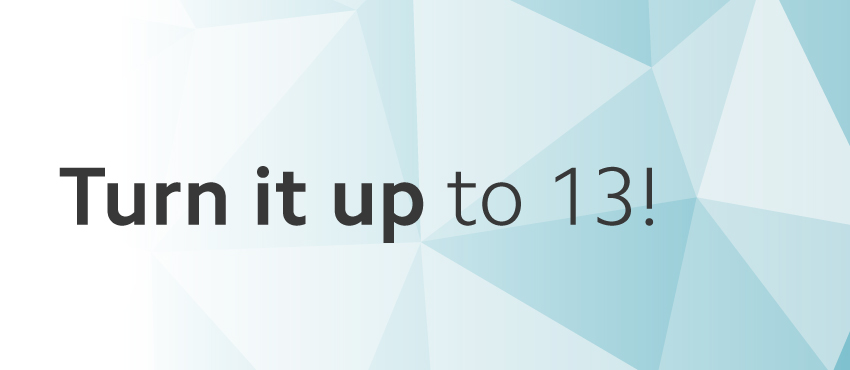ABA’s reflections on LAST Conference 2013
On a typical rainy Melbourne day, nearly 400 Lean, Agile and Systems Thinking (LAST) enthusiasts headed to Swinburne Uni to learn more from their colleagues. The schedule was packed with 69 different sessions, meaning it was impossible to see everything you wanted to. I hunted out a few sessions that were applicable to Business Analysis.
My day started by attending “Using games to Innovate”. The talk aimed to provide a number of different workshop techniques that combined games and way to identify innovative ideas. Anton Rossouw started by saying that “Innovation occurs when collaborating with others”, and that he has countless examples where large companies (i.e. SAP, Yahoo) were using games to innovate. We went through a number of examples, but my favourite was: “Speed Boat”. It is a game used for Retrospectives and it identifies three main areas with drawings to help visualise:
- An anchor represents what is currently back holding our boat (i.e. project, team)
- A strong gust of wind represents what could give us extra boost to push the boat forward
- An iceberg is that small blip in the far distance (i.e. future), that will cause catastrophic results if we don’t do anything
Members in the workshop will add sticky notes to each area, and identity what can be done to action the most important points. For more information, and other workshop techniques, go to: www.innovationgames.com.
The next noteworthy presentation that I attended was “How to make unforgettable User Stories”. We were immediately told to put down our pen and notepad, put away the iPad, because we were going to draw. Lynne Cazaly spoke about the power of using visuals to recall information, and to explain complex problems. She claimed that visual are 60 times (or was it 60,000 times?) more effective than words in regards to recalling information. Visuals capture information, convey information, and allow for collaboration. They must be in context and have a level of competence.
Lynne pointed out, just because you think your drawings suck remember that they’re still better than the people not drawing at all. This comment got a good laugh from the audience. So how does visuals apply to User Stories? Lynne’s idea was to draw three icons on each User Story: Who, What, Why. As a… I want… So that… A very obvious correlation.
By adding these three icons on each User Story, in addition to text, she found that team members were more likely to remember more about the User Story, but also where it was on the Story Wall.
These icons should be simple; preferably using one primary shape. This can include a circle, square, or triangle. They don’t have to be perfect, but the icons should be enough to explain what is meant by the User Story.
For more information you can either buy Lynne’s book: “Visual Mojo” or check out her website: http://www.lynnecazaly.com.au/, which has heaps of resources and information.
The final noteworthy presentation I attended was “Putting stories to work” by Shawn Callahan. Shawn was explaining the power of storytelling, and how it is far easier to remember stories, compared to dot points (whoops… I include a few dot points in my Speed boat example). Telling stories are powerful as they link to our emotions and feelings. The other interesting thing is that 60% of the time, you are actually telling a story. There are a few keys points to spotting a story: Starts with a time/place/character marker, includes events, there are characters with people’s names in the story, and there is dialog between the characters.
Shawn explained that whenever we get into a work scenario, we feel as though we have to be formal and dot points become prevalent. However, this doesn’t have to be the case. We can both tell stories, and ask questions that will get people to tell you stories. And you want people to tell you stories, because you’re more likely to remember what they said!
So what do you ask? It depends on how you frame the question. Some examples are: “tell me a time when…”, “tell me about…”. There is a lot more to research on this topic in order to work out what questions to ask in different scenarios. I’ll certainly be doing this, while working on my drawing skills. You can check out Shawn’s company’s website: http://www.anecdote.com.au/index.php and have a read through their blogs.
Of course I went to a number of other sessions, which also had value information. Below is a very quick summary of all the other stuff (also breaking Shawn’s recommendation that dot points don’t help with remembering information):
- Need help with time management or focusing on your work? Have a look at the “Pomodoro Technique”: http://www.pomodorotechnique.com/
- When leading a team, how can you make someone deliver? Check out Dan Pink’s inspiring speech: http://www.ted.com/talks/dan_pink_on_motivation.html
- What does responsibility (i.e.responsibility for someone’s job or a piece of work) mean to some one? Check our Chris Avery’s presentation and interview: http://www.infoq.com/interviews/avery-responsibility
Overall, LAST offered a lot of value considering it cost less than $100 to attend! There was a number of quality presentations, and the odd freebie as well. If you don’t have much left in the training budget, why next consider attending LAST next year in 2014?

